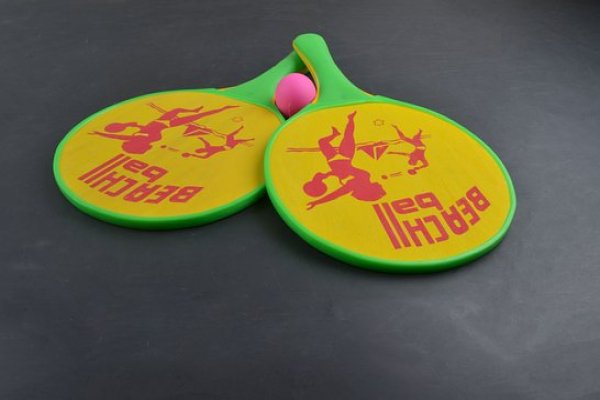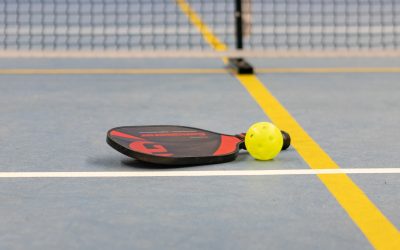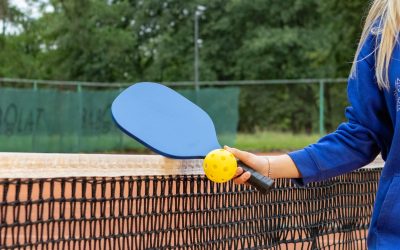Over the past few years, Pickleball has rapidly become one of the most popular sports among athletes and non-athletes. It’s easy to see why – Pickleball is a sport that combines elements of tennis, badminton, and table tennis (ping pong), making it accessible for players of all ages and skill levels. What’s more, it can be played both indoors and outdoors. Pickleball is a great way to stay active and have fun, so why not try it? All you need is a paddle, a ball, and an open Pickleball court!
This unique game is fun, active, and exciting – made even more enjoyable when you have the right Pickleball paddle. But with so many different Pickleball paddles available, what is the best material for your Pickleball paddle? In this blog post, we’ll share some insight into the various materials used to make these paddles and provide guidance on which ones are ideal for recreational and competitive play. Read on to learn more about choosing a high-quality Pickleball paddle that can help improve your game and provide long-lasting performance!
Core Material: Polymer
I would estimate that the vast majority of paddles, around 95%, use a polymer core. Polymer is the most commonly used core material by brands, and they will typically refer to it as polypropylene or even just “poly.” It’s a type of hard plastic. Polymer is a favored core material for many reasons, including its toughness, quieter sound, and combination of power and durability.
Polymer cores are often used in high-performance applications where these qualities are essential. These poly paddles can vary greatly in quality and price. The quality of a poly paddle is determined by the manufacturing process, the type of rubber used, and the thickness of the sponge. Higher-end paddles will have a better manufacturing process, higher-quality rubber, and a thicker sponge. A higher-grade polymer is used in the pricier paddles, making them more durable and providing a uniform sensation on the face.
Aside from the quality of the polymer, another factor to consider is the density of the core material. The higher-density core features smaller honeycomb cells. The paddle’s core is harder and more powerful than larger, celled cores; it provides a solid sensation. The hardcore makes the paddle ideal for those who want to feel a solid hit.
It is generally assumed that brands use the typical large honeycomb cells in their products unless stated otherwise, indicating a lower-density core. This assumption can be made because the large honeycomb cells are less expensive and more widely available than other cell cores.
Polymer Exceptions
The gearbox is a unique brand that exclusively makes paddles with a polymer core and 100% carbon fiber. I have a review of one of their paddles on the site, yet they are the only brand that doesn’t strictly use polymers. The gearbox is a paddle company that has taken a different approach to designing its product. They have created a paddle with great power and control by fusing a polymer core with 100% carbon fiber. I think this makes them the best paddle company on the market.
Although Amazon might offer aluminum cores, these are scarce and not a material that major paddle companies typically use. It is best to avoid aluminum cores since they tend to dent and wear out quickly.
Core Thickness
The thickness of the core is a key factor when considering the performance of a paddle. A thicker core, typically around 16mm, is known for its softer feel and improved control. Thicker cores usually mean more paddle weight, translating into more power behind each shot.
Stabilizing lighter paddle movements is important to many players, so 16 mm cores are popular for their user-friendly nature. These cores are easy to control and provide a consistent playing experience. I highly recommend a 16 mm core for beginners – it’s the go-to choice of the best players, such as Ben Johns. These cores reduce wobble from off-centered shots, so you can focus on becoming the best player you can be.
Core paddles with 10 to 14 mm thickness are known for having more force and responsiveness. However, they may sacrifice some control and touch. Due to the increased instability, off-center shots with a thinner core will provide more feedback than those with a thicker core. This will help you determine whether or not your shot was successful and make the necessary adjustments.
Generally, increasing the thickness of a paddle’s core will increase its softness and control. While decreasing, the thickness will make it feel harder off the face and boost its power.
Fiberglass Paddles (Composite Paddles)
Fiberglass has traditionally been the most widely used material for this application, but carbon fiber has now replaced it. Among the options, fiberglass provides the greatest strength. Be aware that composite Pickleball paddles and fiberglass refer to the same material. They may be labeled differently, but they are essentially the same.
Fiberglass is not as rigid as carbon fiber; it is like a trampoline that absorbs the energy from the ball and returns it. This makes it an ideal material for sports equipment such as Pickleball paddles, Tennis rackets and Hockey sticks, which need to withstand high-impact forces without shattering.
Carbon Fiber
Fiberglass is often seen to provide more power, but carbon fiber offers an improved feel. The material is not only extremely durable but also very stiff. Carbon fiber provides a better feel because it is stiffer than fiberglass or wood paddles. The material is also much more durable. A heavier paddle makes it a good choice for high-performance applications.
Graphite Pickleball Paddles
Graphite is generally less expensive than carbon fiber in face construction, yet it still maintains similar performance properties. Regarding weight, lightweight paddle graphite is comparable to carbon fiber. This makes it an attractive option for those looking for a material that doesn’t sacrifice performance.
With a better feel than fiberglass, and power comparable to carbon fiber, the product is well-known. Testing the various paddles made it challenging to tell if the face was a graphite paddle or carbon fiber paddle. The weight and power of the paddle were almost identical, but there was a noticeable difference in feel.
Conclusion
If you want the best possible Pickleball paddle, it is important to consider what you need. When choosing a Pickleball paddle, consider these questions: Do you prioritize lightness and portability? Or do you prefer paddles that offer more power behind your swings? There is no “one size fits all” answer to finding the best Pickleball paddle – ultimately, it depends on your preferences and playing style.
We hope this article has helped you better understand the different types of materials used in Pickleball paddles so that you can make an informed decision about which one is right for you. A good practice is to try the paddle before you purchase it; a lot of places have samples for you to try.














0 Comments